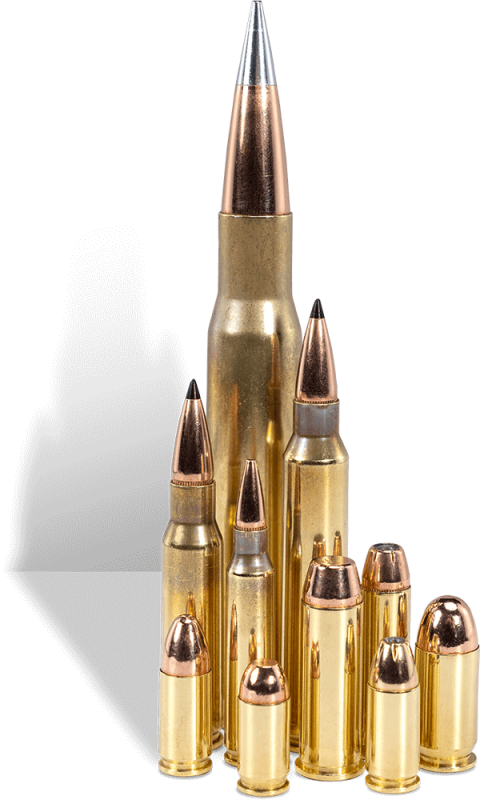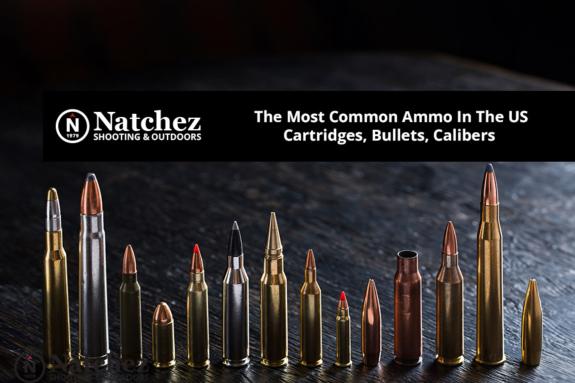Ammunition Pro Llc Fundamentals Explained
Ammunition Pro Llc Fundamentals Explained
Blog Article
The 8-Minute Rule for Ammunition Pro Llc
Table of ContentsThe Ultimate Guide To Ammunition Pro LlcMore About Ammunition Pro LlcThe Ammunition Pro Llc DiariesSome Known Details About Ammunition Pro Llc Our Ammunition Pro Llc Ideas
The standard parts of ammunition coincide for rifle, handgun, and shotgun ammo. Knowing exactly how ammo works is an essential aspect in being a liable gun proprietor. Today we're checking out the what the basic components of ammunition are and exactly how they collaborate to fire a round. The standard parts of ammo shown on a 9mm. Online Ammunition Store round.It houses the primer and powder. The bullet is seated in the open end of the instance. When you fire a bullet out of a semi-auto weapon, the weapon's extractor raises the case from the shooting chamber and it flies out of the weapon. The case is likewise often referred to as coverings, brass, or housings.
A gun's firing pin strikes a cartridge's guide. The guide is situated in the edge of the instance of a rimfire cartridge.
Our Ammunition Pro Llc PDFs
Gunpowder following to the situation that commonly has it. It is typically a mix of saltpeter, charcoal, and sulfur.
We call the projectiles for shotshells, which we fire through shotguns, slugs and shot. Now that you have a standard understanding of the standard parts of ammunition, you can really feel a little bit extra certain in just how your weapon and ammo function!.
Some Known Incorrect Statements About Ammunition Pro Llc
Stay on top of Special Deals, Advancement Notice of Sales, and Store Events
Fun reality: Grains are used to explain the mass of a bullet since completely back in the very early days of firearms, it was an apothecary's device of dimension, and a typical step was needed to figure out exactly how much cause use to make actors lead bullets (Shooting Supplies). 'Grains' as an unit of action for weight goes all the means back to old times, and represents the weight of a grain of wheat

(https://reedsy.com/discovery/user/ammunitionpro)For recommendation, the weight of a paper clip is around 16 gr. So, we know that grains are an action of mass, and a lot more = much heavier, and heavy is great, right? Yes, hefty is good, yet mass of the projectile isn't the only point you need to consider when picking a round for your firearm.
Ammunition Pro Llc Fundamentals Explained
This spin is created by grooves cut or hammered into the interior of the barrel, which are referred to as 'gunning'. Enjoyable reality, this is the origin of the term "Rifle" ex lover. A rifled musket vs. smoothbore firearm. The result this spin has on projectiles is a supporting one the bullet rotating keeps the nose pointed right, similarly that a flawlessly spiraled football toss is mosting likely to be a lot more steady and exact in trip than an ugly duck, end over end throw.
How does this relate to grain weight? Visualize you're on one of those play area slide carousels, the ones with bars you hold on to while it rotates.
Or when it comes to the carnival ride, you begin to really feel larger. The even more mass you have (weight), the much more you will feel this impact. The exact same impact occurs with bullets. The much heavier the projectile, the even more result a much faster spin will certainly have on it. This is why you have a tendency to see slower twist rates for larger, slower projectiles, and faster spin rates for lighter, greater velocity projectiles.
Rumored Buzz on Ammunition Pro Llc
There's one more factor that we have to think about when choosing a grain weight for our ammunition. As meant above, bullet speed, or the rate of the projectile, is a major element when figuring out the most effective grain weight projectile to make use of. Velocity is impacted by a few significant aspects, consisting of the kind and quantity of propellant (gunpowder), barrel size, and bullet weight.

One of the most common grain weight rounds for 9x19mm cartridges are 115gr and 124gr. These are commonly lead core, completely jacketed (FMJ) rounds. Both of these grain weight cartridges will do well in manufacturing facility 9mm handguns, to normal handgun distances (approximately 50 backyards). 115 grain rounds are the most usual (and as a result least costly).
Report this page